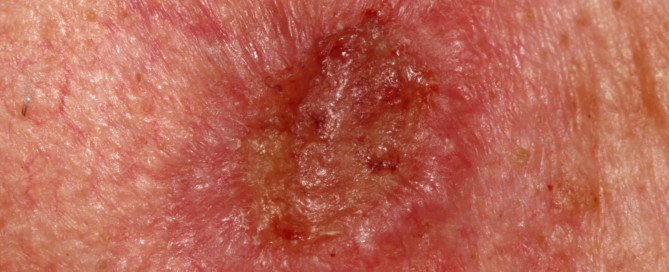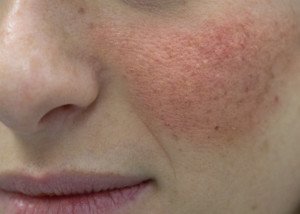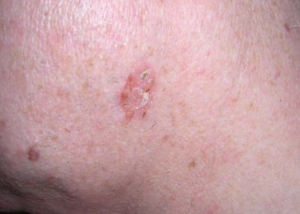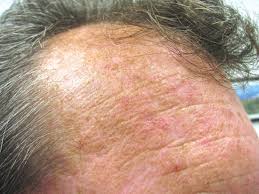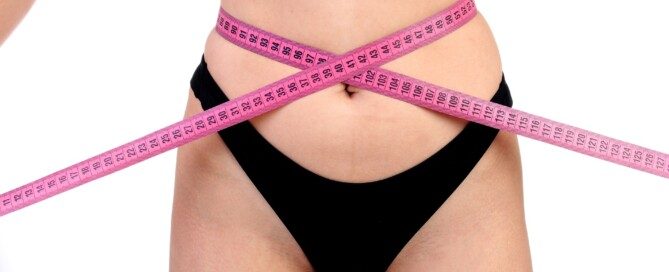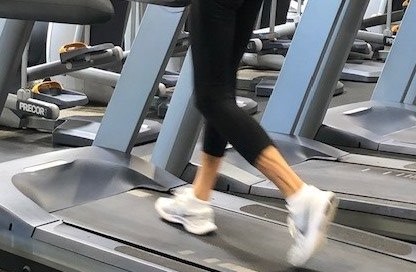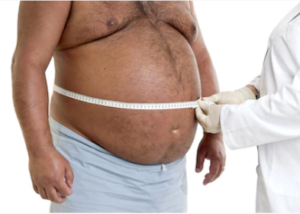Squamous Cell Carcinoma Skin Cancer Questions Answered

What is squamous cell carcinoma? It’s the second deadliest skin cancer.
Squamous cell carcinoma, which is directly tied to sun exposure, kills about 3,500 Americans yearly. (more…)
Why People Should NOT Come in All Sizes: Obesity Is Unhealthy

People should NOT come in all sizes. Though height variation doesn’t cause bad health, obesity does. Size variety is no excuse for accepting fat prevalence.
Science does not support the mantra that “people should come in all sizes.”
Height variation and natural proportions aside, the variation in body weight is where the problem lies.
Humans did NOT come in all sizes before the advent of machines that did all our work for us, and the proliferation of fast food places, Dairy Queens and the computer.
Our hunter-gatherer ancestors came in only one size: lean. The exception is when famine affected populations, reducing them to a thin, malnourished state.
“Because of the practice I’ve chosen (fitness-based weight management), I have certainly become more understanding of the plight of individuals struggling with excess weight,” says Richard Kelley, MD, a practicing physician in Texas for 20+ years, and author of “The Fitness Response,” “The Three-Hour Appetite” and the ebook, “The Fitness Response ‘Diet’ for Women.”
Dr. Kelley recognizes that weight loss is not easy, but he also says it’s not impossible long term.
“People do come in all sizes and always will,” he says, adding that some people have a greater genetic tendency to gain fat than others, and there are even those who (thanks to great genes) can have excess weight and still live a long and disease-free life (though this is the exception).
Dr. Kelley also explains, “I believe that for most of us, overweight and obesity carries with it an increase in medical risk.”
This includes knee pain and impaired stamina.
Dr. Kelley recalls a woman who came to the ER during his residency training.
“She died for no other reason than the fact that her excess weight made finding a vein impossible when she needed it most.
“A team of highly trained and experienced healthcare professionals working frantically on this patient, were never able to deliver the IV fluids and medications this woman required.”
This experience highlighted for Dr. Kelley the importance of maintaining a healthy weight.
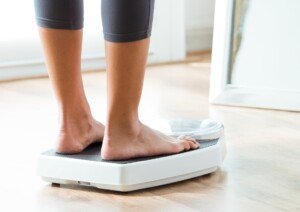
Freepik.com
“I continue to work in the emergency department outside of my clinic practice and daily see the pathology that excess weight brings with it.
“Being grossly overweight or obese often leads healthcare workers on a fruitless ‘search and find’ mission when it comes to finding vascular access.”
Coming in All Sizes Doesn’t Mean “Should”
If you’ve been trying to lose weight and have been unsuccessful, do not give up and subscribe to the myth that people should come in all sizes.
They DO come in all sizes, but “do” does not mean “should.”
“I am a strong believer that each of us should have the freedom to choose how we will lead our lives,” says Dr. Kelley.
“Choices have consequences, however, and that’s what I try to teach my own patients.
“Complacency and acceptance sometimes backfire and result in an outcome we never predicted.
“When that happens, it is often with our regret, especially when deep down inside, we knew that there were alternatives.”
 Richard Kelley, MD, is an author, speaker, fitness expert and transformation coach.
Richard Kelley, MD, is an author, speaker, fitness expert and transformation coach.
 Lorra Garrick has been covering medical, fitness and cybersecurity topics for many years, having written thousands of articles for print magazines and websites, including as a ghostwriter. She’s also a former ACE-certified personal trainer.
Lorra Garrick has been covering medical, fitness and cybersecurity topics for many years, having written thousands of articles for print magazines and websites, including as a ghostwriter. She’s also a former ACE-certified personal trainer.
Can Facial Extractions Cause Eye to Keep Tearing Afterward?

It’s normal for eyes to tear during facial extractions. I’ve had quite a few facial extractions, and after every one, my eyes were very watery. (more…)
Can’t Burn Fat? Use Your Force Production Muscles for Exercise
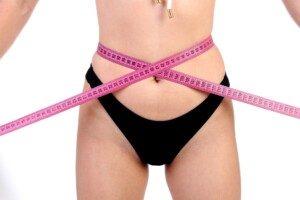
No WONDER the fat won’t come off your stomach; you’re spending too much time working your stabilizer muscles and not the force production ones. (more…)
Can You Get More Skinny Fat Walking on a Treadmill?

Sick of being skinny-fat?
Don’t worry, no amount of treadmill walking will make this condition worse. However, there IS something that WILL make it worse. (more…)
Is it Unhealthy if a Woman’s Hip Bones Show?

A woman does not have an eating disorder just because her hip bones show; visible bones should not be the gold standard for malnourishment.
Though the hip bones on all women with anorexia nervosa are quite prominent, this doesn’t mean that the converse is true:
That a woman whose hip bones are visible necessarily has this eating disorder or a less serious form of restricting caloric intake.
Over the past several years, however, many people have been zooming their eyes in on those hip bones when a celebrity woman is wearing a bikini or other attire that reveals this area.
But if she or a woman with a similar build were walking down the street in jeans and a T shirt or in a pantsuit or skirt and top, nobody would see the hip bones or even look there to see if they were visible — and hence, not think the woman has an eating disorder unless she weighed 97 pounds at 5’7.
The hip bones of the woman at the top of this article show. But look at her shoulders, arms and legs.
Those muscles look well-fed.
My hip bones show. I’m strong, fit, fast and have excellent blood work and naturally low blood pressure.
Visible hip bones do not necessarily equate to an eating disorder or malnourishment.
However…when hip bones show in a woman — along with spindly, weak-looking arms, lack of abdominal musculature and toneless “chicken” legs … it’s a safe bet that there’s some under-eating going on.

Shutterstock/Nomad_Soul
There’s a big difference between the physiques of Angelina Jolie and Leanne Rimes.
Both these women have been chastised by the media for being too thin.
When I look at Angelina Jolie, I see a woman who, at most, does minimal exercise (maybe a walk every evening or some light work with tiny dumbbells), and who simply does not eat enough; she’s undernourished.
Younger photos of Angelina Jolie are incriminating; they show a slightly fuller body, fewer visible bones, but still very slender.
But more contemporaneously, she is just too underweight and it looks awful. Even marathon runners don’t look like this. They at least have tone.

Leanne Rimes, take my word for it, is eating healthfully but with a lot of control, having finally decided to crack down on her weight and fitness by taking strength training very seriously—and practicing healthier, portion-controlled eating habits.

Just because you can see her hip bones and other bones doesn’t mean she’s in the same boat as Angelina Jolie. Unlike Angelina Jolie, Leanne Rimes has toned muscles.
I wouldn’t be surprised if the singer could knock off a set of pull-ups and then drop down to a set of men’s pushups, whereas the feeble looking Jolie, I’m sure, would struggle to complete just half a pushup, and a single pull-up is out of the question.
Rimes’ body composition is different than Jolie’s; Leanne is what I call skinny-toned, while Jolie is skinny-weak.
Many elite female athletes have visible hip bones.
This means a lot of muscle in the body keeping fat buildup at bay. This can be accomplished without underfeeding the body.
“Just because a woman’s hip-bones show, does not mean she is too thin,” says Kathryn Boling, MD, a board certified family medicine practitioner with Mercy Medical Center in Baltimore, MD.
“A normal BMI is between 20-25. That means a woman who is 5 feet 3 inches could weigh as little as 115 and have a BMI of 20.4 (low end of normal).
“The average woman in this country is 5 feet 4 inches and weighs 140 lbs.
“A woman of the same height can weigh as little as 118 lbs. and still be within a normal BMI at 20.3.
“The average woman has a BMI of 24.0 (also normal).
“However, it is not hard to imagine that hip bones might not be visible in the 140 lb. woman at this height — but would be visible on the 118 lb. woman.
“Both would not be considered too thin by medical definition.”

Dr. Boling diagnoses and treats a wide range of conditions from acute illnesses to chronic diseases such as diabetes and hypertension, and has 20 years’ experience with Mercy Medical Center-Baltimore.
 Lorra Garrick has been covering medical, fitness and cybersecurity topics for many years, having written thousands of articles for print magazines and websites, including as a ghostwriter. She’s also a former ACE-certified personal trainer.
Lorra Garrick has been covering medical, fitness and cybersecurity topics for many years, having written thousands of articles for print magazines and websites, including as a ghostwriter. She’s also a former ACE-certified personal trainer.
.
Top image: Shutterstock/Jacob Lund
Why Stair Climbing Can Fail at Fitness

If you think you’re fit because you use a staircase in your house, keep reading.
Because you are being deceived into thinking that simply climbing the stairs every day will automatically make you fit and healthy. (more…)
Can OSA Ever Be Diagnosed without a Sleep Study?

Can obstructive sleep apnea ever be diagnosed without a sleep study in which someone sleeps through the night with wires attached to their head and other devices recording their vitals?
Diagnosis of OSA is not the same as detecting or witnessing it.
“Actually, an astute bed partner can witness the apneas sometimes,” says Daniel Rifkin, MD, a sleep medicine expert at the Sleep Medicine Centers of Western New York.
People have observed a bed partner or other family member’s breathing literally cease for up to a minute.
They have witnessed this occur over and over again during overnight sleep or even a nap.
When the breathing resumes, it’s often accompanied with a gasp or snort.
The suspicion for OSA should be high in people who exhibit repeated stopped breathing during sleep, and especially if snorts and gasps, or what seems like labored breathing, is witnessed.
The suspicion can be confirmed only with a sleep study.
“The sleep study is not only important in diagnosing the presence of sleep apnea, but it’s most helpful in determining severity,” says Dr. Rifkin.
“We approach treatment differently for different levels of obstructive sleep apnea.
“Mild sleep apnea is defined by greater than five episodes of sleep apnea per hour but less than or equal to 15 events.
“Moderate sleep apnea is between 15 and 30 events per hour, and severe sleep apnea presents with greater than 30 events per hour.
“I’ve had many patients with even more than 100 events per hour.”
Sleep Apnea Myth
A myth is that thin people are immune to OSA. This is absolutely NOT true, because smoking and drinking can promote OSA.
In addition, a natural excess of pharyngeal tissue, a large tongue base and a narrow airway can also give rise to apnea events.
 Dr. Rifkin is board certified in both neurology and sleep medicine. He also treats insomnia, RLS and narcolepsy.
Dr. Rifkin is board certified in both neurology and sleep medicine. He also treats insomnia, RLS and narcolepsy.
 Lorra Garrick has been covering medical, fitness and cybersecurity topics for many years, having written thousands of articles for print magazines and websites, including as a ghostwriter. She’s also a former ACE-certified personal trainer.
Lorra Garrick has been covering medical, fitness and cybersecurity topics for many years, having written thousands of articles for print magazines and websites, including as a ghostwriter. She’s also a former ACE-certified personal trainer.
.
Freepik.com, katemangostar
Source: sciencedaily.com/releases/2011/06/110613104255.htm
sscpywrt26
How to Prevent Migraine Headaches from Disrupting Sleep

Migraine headaches can interfere with sleep, but there are numerous things you can do to finally get a good night’s sleep, without the interruption of the migraine headache pain.
“Migraine headaches can happen at any time of the day or night,” says Daniel Kantor, MD, director of the Neurology Residency Program, Florida Atlantic University.
“We are often so busy during the day that some people are ‘too busy’ for the headache during the day (they have it but just don’t notice it), and only really feel the pain at night.”
And that’s when the problems begin, when the migraine headache sufferer tries to fall asleep.
The first tip for falling asleep despite migraine headaches: “Sleep hygiene means doing things right to make the bedroom an environment conducive to sleep,” says Dr. Kantor.
“The bedroom is for two things: sleep and sex. It is not a place for TV watching, eating, etc. — these things are stimulating and will keep you awake and make it harder to fall asleep.”
You don’t want the bedroom to be a conditioned stimulus for staying awake.
The next thing is to make sure your doctor is doing all that’s possible to lower the intensity of your migraine headaches, since a good night’s sleep will be impossible if the pain is bad enough.
Dr. Kantor advises: “Try to relax before falling asleep — breathing exercises work great, as does mindful meditation.”
Wind down as bedtime approaches; avoid stressful or stimulating activities like heavy computer work.
The next sleeping tip for migraine headache sufferers is to “take a warm bath 45 minutes before your bedtime — as your body cools down, you get sleepier and sleepier,” says Dr. Kantor.
He also suggests taking a medication prior to bedtime that’s designed to subdue migraine pain, as these can induce a sleepy feeling.
“Go to bed at the same time every night, so that your body gets used to a full night’s rest.” This will help reset your body’s circadian rhythm.
“Make sure to talk to your doctor about your sleeping problems — they may be related to other problems, like anxiety, stress, depression and even sleep apnea and narcolepsy.
“Sleep apnea is important, not only because it makes you feel less rested, but also because it causes chronic migraines and can lead to an increased risk of heart attack and stroke.”
Being overweight, with a short thick neck, are risk factors for obstructive sleep apnea, though thinner people including children (a tiny percentage) can have this treatable disorder.
If you suffer from migraine headaches, it is absolutely crucial that you persistently try to remedy any sleeping problems. Dr. Kantor says, “We know that lack of sleep can trigger migraines.”

Dr. Kantor is also President Emeritus, Florida Society of Neurology.
 Lorra Garrick has been covering medical, fitness and cybersecurity topics for many years, having written thousands of articles for print magazines and websites, including as a ghostwriter. She’s also a former ACE-certified personal trainer.
Lorra Garrick has been covering medical, fitness and cybersecurity topics for many years, having written thousands of articles for print magazines and websites, including as a ghostwriter. She’s also a former ACE-certified personal trainer.
.
Top image: Shutterstock/Supawadee56
What Exercises will Help Burn Fat in the Butt?

If your behind is huge and mushy, you need exercises for a fat butt that will shrink and tighten your rear-end.
The majority of a big rear-end is fat, not muscle. (more…)

